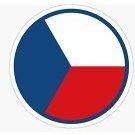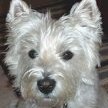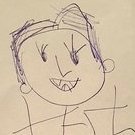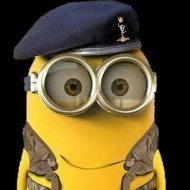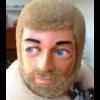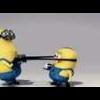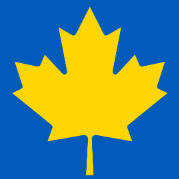Leaderboard
Popular Content
Showing content with the highest reputation since 23/03/24 in all areas
-
Good afternoon all, Bit of a mammoth project for me. It's taken five months and one week of (almost) daily modelling, and thus well in excess of 200 hours. It could (and maybe should) have consumed so many more. The basic kit is from Academy and the decals are a scheme provided by AOA Decals that represents a CH-53E from HMM-264 in 2006. The sheet covers multiple types and thus some of the markings are required from the kit sheet, and some (like the national insignia on the horizontal tail surface) need to be painted. Additions are numerous: Added UHF antenna above and below fuselage Scratchbuilt GPS antenna on fuselage spine Modified antenna mount on starboard side of spine Peanut light added to tail tip Eduard and Archer resin rivets all over (of several pitches) Resin wheels (Armory - nice but don't fit) Resin exhausts (ResKit - nice) Resin air intakes (ResKit - awful) Resin tail rotor (ResKit - nice) Resin main rotor hub (ResKit - mediocre (at best)) Blades dropped Blades magnetised (i.e. removable) Rotor blade hub magnetised Resin refuelling probe (ResKit - nice) Refuelling probe magnetised Cables for NVG sensor arm Cables for engine intakes Cable for refuelling probe Scratchbuilt search lights lower front fuselage Exhaust shroud made from foil Scratchbuilt engine intake struts Scratchbuilt Lifting eyes Scratchbuilt Maintenance struts x2 Eduard brass (inside and out) Pitots replaced with brass tube Rotor hub wired ANYZ connectors dotted all over the place AOA decals NVG sensor removed Chaff buckets modified to be empty There's a lot wrong with it, but I won't list that here. On to the photos... Thanks for looking and comments welcome. Jon94 points
-
I've just finished this in the FROG GB and thought it might be of interest to a wider audience: The aircraft is well-photographed example from 60 squadron, based in the North-West Frontier (present-day Khyber Pakhtunkhwa), some time before 1930 (leading blue stripe on rudder). I picked up the kit for four quid from a vendor at SMW in 2018, and the conversion was inspired by an article in the May 1966 edition of Meccano Magazine by Doug McHard. A few notes: The engine is an accident. I expected to have to source one from elsewhere and I just started messing around with the kit one and some scraps for fun. It ended up looking too good for me to throw away (but unfortunately not much like a Jupiter) so it stayed... The bombs are left over from a Airfix DH4 kit. They look longer than the 112lb bombs in the photos (don't know whether they are a different earlier type or simply not accurate) and as a result I've put them side by side instead of in tandem on a single rail. There is such a lot of extra detail that could be added to these inter war general purpose machines (bomb rails for instance); it's sometimes hard to know when to stop when you find yourself in a rabbit hole. I don't have any figures appropriate to the period or location to pose alongside. Shorts and solar topees were the order of the day. I need to build a DH4 to go with this, my DH9 (Airfix conversion) and 9A (KP) so I can pose them for a family group photo. Apart from giving the tyres a sandy dusting, I didn't do any explicit weathering. The model got handled and touched up so much when I was rigging and adding all the detail that it ended up looking pretty well used without any extra help! Another inspiration for this build was @hendie's magnificent 1/48 CAD design and 3D print scratch build of a 28 Squadron Wapiti here on BM. It was interesting to me to see how different the three builds were to each other, driven by the different modelling eras, techniques and starting points. The WIP for my build is here if you are interested, and the Doug McHard article can be found here. Thanks for looking, Adrian85 points
-
The top scoring non-German fighter pilot during WW2 was Eino Ilmari "Illu" Juutilainen with 94 confirmed combat victories (though he claimed 30 more), all against the Soviets. He had flown "obsolete" Fokker D.XXI and Brewster Buffalo B-239 fighters before he had a chance to get something more modern - a Messerschmitt Bf 109. Today the Brewster Buffalo is frequently considered one of the worst fighter planes ever made. But achievements of pilots like Ilmari Juutilainen, Hans Wind, Eino Luukkanen and other Finnish aces proved otherwise. In competent hands and under right circumstances the Buffalo turned out to be a really vicious killer. Ilmari Juutilainen had been flying the Buffalo BW-364 until 1943 when he was transferred from LLv.24 to LLv.34 armed with new Messerschmitts Bf 109G. He concluded his “Buffalo adventure” with 34 victories (the second best score after Hans Wind with 39 victories). The Hobby 2000 kit (Hasegawa repack), built completely out of the box. This was a quick but surprisingly fulfilling project. I liked this simple kit a lot 🙂 Enjoy and comment at will 🙂 Marcin84 points
-
Ahoy there, lads! Latest update from the Admiralty. She's done. But first, some background. Back in 2021 you'll recall i built the Airfix Buccaneer. I did an extensive build thread on carrying out the backdates, as well as my musings on kit construction and painting. The end result, as you see here was very well received on Britmodeller when it was first posted in RFI. It was also very well received on the contest circuit and it placed second at the IPMS Nationals in Las Vegas, in 72nd scale Multi Engine Jet-Large. And then, from the department of, "You can't make this stuff up"...THIS happened. In a cruel twist of fate, the rather tall and narrow-based 2nd place trophy toppled over and smashed the Buccaneer like a wreaking ball. Let's just say i was extremely upset. Still am. Anyway, i was inconsolable for months over this. Not the way you want to come home from the IPMS Nationals. I didn't bin the model, but looking at it made me sad. Brian Scott (F-104Nut) offered to help by sending me parts from his unfinished Buccaneer kit. When i received it, i discovered the model was already largely assembled and so i thought... why not finish it? And so i did. Presenting Buccaneer Number 2, XN980. The Accidental Buccaneer. Before i throw down more pretty pictures, let's get the Executive Briefing out of the way. Kit Used: Airfix Blackburn Buccaneer S. Mk. 2C, kit no. A06021. Scale: 1/72nd (It's British. What other scale would it be?) Decals: Xtradecal for Squadron Modex numbers and Serials, Squadron Crest and ROYAL NAVY titles; balance comes from the (excellent!) Airfix decal sheet. Markings: No. 801 Squadron, RNAS Lossimouth, seen during her initial deployment to HMS VICTORIOUS in 1966. Cockpit: Eduard ZOOM Photo etch cockpit set, Martin Baker Ejection Seats by Aerocraft. Wheels: Eduard Pitot Boom: Master Additional Modifications: Pretty much summarized in the first Buccaneer Build, but lots of carving and filing away of modifications acquired over the years, to correctly backdate the model to 1965-66 standard. Chief among these were: Carving away the aerodynamic fairings adjacent to the intakes (the so called 1044 Mod), and a slimming down/ re-profiling of the aerodynamic "Bullet" fairing on the back end of the vertical fin. Upward angled "Ironing Board" removed from rear cockpit. Hole for landing light on nose gear strut filled. Inboard flaps were lowered and Flaperons drooped at slightly different angles to represent hydraulic pressure bleed-off. Black-painted plastic discs punched out and stuffed in backs of rocket cannisters to hide seams. Weight reduction holes in air brake panels drilled out. Frangible glass disc drilled out of kit fuselage and clear disc fashioned from Butyrate and a punch and die set (largely obscured by decal). TAT and static probes thrown away and replaced with scratchbuilt items (more easy to manipulate). UHF TX/RX antennae replaced with Evergreen strip stock (again, it was just easier to fabricate these from scratch, rather than to clean up the kit parts). Brake stacks cut from outboard landing gear forks in order to accommodate Eduard wheel /brake assemblies. Axle holes drilled out and ultimately replaced with Plastruct or Evergreen rod axles. Paints: Mostly Tamiya, to include their white surface primer (decanted from spray can) and extra dark sea grey mixed from scratch according to guidance found on Replikator.club. Glos and Semigloss clear finishes are Mr Color GX-112 Super Clear UVCut for gloss and Mr Color 181 for semigloss. I said it before, i'll say it again: This is a brilliant kit by Airfix. It is extremely robust when fully assembled and doesn't creak or groan when handled like earlier Buccaneer offerings. Just the right amount of detail without being monstrously delicate or fiddly to put together. I'm hoping that Airfix will eventually relent and offer us a Supermarine Scimitar and a Sea Vixen (both versions) to augment this very nice model and the Phantom. Comment, as always is welcome. Right then. On with the photos.... As ever, thanks for shopping. And now, i really need to get back to this Phantom....83 points
-
Hello, some pictures of my new build Mirage F1B by Special Hobby in 1:72. Add CMK wheels, seats and engine, Eduard interior PE set as well as a Master pitot. Used the decals OOB and some by Berna for an EC2/30 aircraft based at Colmar in 2009.80 points
-
I'd built the Airfix Valiant quite a while ago and it was interesting to note the advances made by the company in the 5 years or so between the two kits being released (2011 - 2016 according to Scalemates): a clear step up in refinement and build quality, which they've continued pretty much ever since. Next on the production line is the Vulcan so I'm looking forward to see how it stacks up against their much more recent releases. The size & shape of the Victor makes it hard to photograph, let alone display but I'm quite pleased with how it turned out. Thanks for looking, J.A.78 points
-
Despite early issues with noise levels, the progression of the rotor tip jet design led to a more satisfactory decibel level that paved the way for a niche service operated by the Fairey Rotodyne. Its ability to serve more remote parts of the UK that never had the benefit of runways made it popular due to it's flexibility of cabin design where seats could be removed and freight loaded with ease via the large rear doors. It entered service with BEA in the mid 60's and served into the late 80's with British Airways in a largely similar and uninterrupted capacity. Capability evolved through the addition of upgraded avionics, a radar and more powerful engines and it's service demonstrated an excellent safety record. Operating costs eventually brought about an end to it's role, some of which was replaced by more economical replacements, but some services were sadly ended as BA re-evaluated it's commitments. Of course, this is a 'What-if', the re-released classic Airfix kit that I couldn't wait to have a play with! I'd had this idea for a while and being a 'What-if' took the pressure off creating something accurate. It was about pure fun and nostalgia! The basic kit is well....basic! sink marks and an abundance of rivets typical of that era are present. I wasn't against keeping the rivets, however many had to be destroyed filling sink marks and removing seams so it was easier to remove them all and re-rivet afterwards. The Negus livery was painted and spare decals used for the lettering. The home printed registration was chosen due to being approximately from the era that would have been first flight and being one of the few serials that wasn't assigned to an aircraft (based on my quick research!). The paint is all MRP lacquers, with the blue being a mix of Oxford & Blue hornet blue. Thanks to those that contributed along the way with advice and inspiration The build thread is here: The interior was fitted out with some seats from an OO gauge railway carriage and pre-painted figures added to bring it to life. The windows were sanded flat to remove distortion so that the interior is more visible: Thanks for looking Neil76 points
-
The good old '163 Academy requires various interventions, both in the cockpit area… …and in the exterior of the fuselage, in the wings and finally in the complex undercarriage-skid. The specimen being built is the Me163 B V45, in charge of the Erprobungskommando 16, as it appeared in Bad Zwischenahn in July 1944. The following December it was used to test the SG500 rocket system, which caused irreparable damage to the airframe. The camouflage scheme, slightly different from that of most Komets, consists of RLM 81/82/76. The fuselage decals are Print Scale 72-303 and, as always, the model is painted entirely by brush with Humbrol Enamels color blends. View of the undersurfaces. Hope you like it. Thanks for your interest. Giampiero Piva74 points
-
I have been wanting to build one of these for a while. Luckily I was in a local model shop, and they had one on their second hand shelf!. For it's age, first released in 1984, it is an impressive kit. Recessed panel line, a reasonable interior, with a good representation of the ejector seat pods. There aren't many aftermarket sets, which is not a problem really. I dressed up the cockpits with plastic card and some cockpit decal placards, the rest was out of the box. The bare metal finish was achieved using paints from Mr Color and Tamiya, and a lot of masking tape! The B-58 is an incredibly futuristic looking machine for it's time, and it still looks highly advanced today. Thanks for looking Angelo.74 points
-
As a rule I stay away from bi-planes, too many wings, and then there is the rigging!😲 However, I have always liked the look of the 0/400 and I was challenged to build the kit by my son! The kit was a struggle, the fuselage being made up from four panels was a bit of a challenge, and the whole structure has an unwanted twist in it which I couldn't correct. The other thing I did was to sand off the overdone rib detail on the wings & tail and simulate the rib tape with thin strips of masking tape secured in place with liquid poly. I also added an etched scarf ring for the front gun with the Mini World item, which includes a beautifully cast Lewis gun, and I used two more after market Lewis guns from Gaspatch. The model was painted with Tamiya acrylics. Thanks for looking Angelo.73 points
-
Another Desert Storm warrior in my collection. Hasegawa kit, Aires avionic bays and exhaust nozzles, Eduard armament, Brengun wheels, Quickboost seats and Flying Leathernecks decals. Happy modelling!72 points
-
North American Harvard Mk.IIa, No. 62 Air School (Central Flying School), Bloemspruit, South Africa 1944/45. I used Xtradecal decals to finish the model and also Reskit resin wheels as they look better than the kit offering. I enjoyed the build a lot and I can recommend the kit to anybody but a perfect beginner.71 points
-
Dear Friends This is the Revell Ju 88A-1 which has the short squared off wings compared to the A-4. The best part of the Revell kit is the beautiful cockpit. I felt some of the fuselage panel lines where a tad deep so sanded the whole fuselage right down, particularly near the cockpit. Here I added the Eduard PE cockpit and Eduard MG-15 machine guns. The decals are from the Xtrakit BoB set. This aircraft went out to bomb Woodley airfield in October 1940 near Reading under clouds, couldn't find it so went to alternate target of Hatfield and hit the de Havilland factory (with Mosquito prototypes damaged). The airfield defences weren't asleep and the hit the Ju 88 which crash landed shortly afterwards. Hope you like it? Andrew69 points
-
Hi all I have been working on this one, an Airfix 72nd Beaufighter Mk.X converted to an FAA Mk.II. This was done using an Alleycatz late Mk.II conversion, kindly supplied to me at a very reasonable price by fellow BMer @2996 Victor, thanks Mark , you're a star. The Airfix Fuselage, cockpit and undercarriage are used with the new wings, engines, props and tailplanes from the conversion. I used the prop blades from the CMK early conversion along with the undercarriage doors as they are more detailed. I used the Eduard PE cockpit set and added some extra bits for the interior. The flare Shute and fairing were made from brass tube and brass sheet The model was brushpainted using Humbrol enamels. The weathering was fading the paintwork and an oil wash . With exhaust stains are weathering powders. I used the High Planes painting and decalling guide that I found online this shows the cowlings were painted differently on Port and Starboard. Here are some photos I didn't have the right decals so had to use decal spares and paint them yellow. Barracuda cast early Beaufighter wheels used and some brass rod used to make the framing on the front of the undercarriage legs, lead wire and brass wire used for the brake lines Pleased with this one especially after finishing a Dallachy Beaufighter in January I would like to thank everyone who has offered support and encouragement throughout the build. Thanks for looking in Chris68 points
-
Hi All, Here is my second attempt at building a 1/48 Javelin. The first was using the Dynavector kit and on completion was handed over to the FAST museum in Farnborough and was last seen on display there. This one is using the excellent Airfix rendering which was a joy to build and a real test of masking skills! I purchased two sets of Master pitots and found the A Sqn decals in a Alleycat conversion set other decals came from the kit ones. Paints used were entirely Revell Aqua and finished off with a coat of Xtracrylics Satin Varnish. This aircraft was used for some time at Boscombe as as chase plane and was very accurately calibrated for airspeed readings. It came close to being written off when a new airframe fitter fitted a belly tank release catch the wrong way round so a lot of airframe had to be removed before the catch could be freed ( So I am told by one who was there). The full size airframe was retired to the Duxford museum. MODeller67 points
-
This is the Airfix model of the B-17G. A lovely kit with loads of detail. I built the kit out of the box, apart from adding a set of decals from Kits-World so I could make a B-17 from the 423rd bomb squadron of the 306th Bomb Group based a Thurleigh in Bedfordshire, a few miles from where I live. The kit didn't include the pitot tube or "towel rail aerial" for some reason so I scratched them out of wire & plastic card. I used Tamiya lacquers for the natural metal finish and I used raw umber oil paint to weather the model, creating streaks of dirt, oil leaks etc. A great kit that went together with no problems. Thanks for looking Angelo.67 points
-
Hi guys! I want to show You recently built model. The well-known F4F-4 Wildcat from Arma Hobby. Built didn't cause any problems, except those that were my fault. I added positive rivets from HGW, unfortunately the effect is not very visible in the photos, you have to look closely, it is much better visible in real life. Moreover, I decided to minimize the number of decals, so I painted the markings. I also replaced the position and formation flight lights, which were cast together with the wings and fuselage. The whole thing is enriched with 3D printed parts that I received from Marcin Ciepierski (engine elements, cockpit elements, bombs and bomb racks). You can watch build process o YouTube:65 points
-
Hello all. Here’s my latest from the shed, not my usual fare, but a change is as good as a rest they say. The SR.A/1 jet flying boat fighter concept was brought about because of the success of Japanese water borne aircraft during WW2. In 1943 the Air Ministry funded the development of three Saunders Roe designed aircraft which were completed after the war had finished. The first flight being in 1947. After evaluation the aircraft was not deemed capable of matching the performance of land based aircraft and was not ordered. Two of the aircraft crashed during testing and were lost. The pilot of one was rescued by the occupant of a support launch who dived into the water fully clothed after the aircraft suffered a landing accident. He pulled the pilot free from the cockpit of the sinking aircraft saving his life. That pilot was Eric ‘winkle’ Brown who became one of the most famous test pilots of the time. The kit was typical short run, taking a bit of work to get it together. I replaced the supplied flimsy PE nose grill with silver nickel rod, other than that it was built from the box. It was finished in a mixture of Humbrol 27001 and 27002 and sealed using Xtra color varnishes. The base is from coastalkits. A nice change from the norm I enjoyed the challenge of this build. Here are a few pics, hope you like it. Thanks for looking. Pete65 points
-
This is the Hobby2000 rebox of the Fujimi OA-4M. To the very nice base kit, I added Quickboost seats, Eduard masks, Kelik 3D cockpit decals (first time using these, and they are excellent), a Brengun chaff/flare dispenser, and Eduard LAU-10 Zuni rocket pods (pods in the kit are vastly overscale). Markings are from the kit. The colours are Vallejo FS36320 over FS36495, with Tamiya XF-81 for the green as this seemed a good match for the colour of the kit decals. This was my first attempt at a scheme where the camo has to match up with the decals and I think it turned out fairly well. Chris65 points
-
This is my first final reveal on here so please be kind. I am aware that there is a lot of flaws and imperfections in my build but for me I was really chuffed with the progress I have made over the last couple of years with lots of new things to learn and especially airbrushing not so long ago. so here it is for your thoughts. Its a great little kit. expensive but lots of detail that i did my best with. Couple of fit issues I struggled with namely the canopy but that is probably more me than the kit.65 points
-
Good evening all, Here today I have my 2nd attempt at this Revell kit. The first was a disaster, broke pylons, glued the wings too far forward amongst other things. Parts used for this kit were the SBS models nose and pitot tubes and also the freightdog conversion kit. All other little modifications were scratch built (badly) by me and the decals were supplied by Xtradecal. I opted to use tiny neodymium magnets to connect the pylons to the wings which have turned out to work really well. Thanks for looking Dave62 points
-
Hi all, Here is my Tamiya 1/72 Thunderbolt Razorback, a kit that requires little introduction I guess: great fit, with lovely detail all around. I just added a few details (PE seat belts in the cockpit, brake lines on the main landing gear, vacform canopy, brass gun barrels and DF loop antenna on the spine). The drop tank is from a Pavla armament set. The model represents an aircraft from the 1st ACG, that provided close air support and resupply operations to British troops (the so-called "Chindits") that were dropped behind Japanese front lines in Burma. For this "Operation Thursday" aircraft, I used the DP Casper decal sheet. The sheet provides fuselage stripes and theater bands in both dark blue and black. Reading through Squadron's "Thunderbolt in the Pacific Theater", the fuselage stripes are described as dark blue and the bands on wings and tail surfaces in black, so I settled for this combination. First time I used DP Casper's decals: these are very thin and break easily, so care is needed in handling them but they give a nice result. For the NMF I used a few Alclad shades, other paints are mostly Tamiya acrylics. Weathering was done with oils and pigments. Here is a Wikemedia picture of the real thing: United States Army Air Forces, Public domain, via Wikimedia Commons Credits background picture: freepik, https://www.freepik.com/free-photo/beautiful-scenery-green-tree-forest-cloudy-sky_9185373.htm Hope you enjoy the pictures, thanks for looking! Best regards, Patrick62 points
-
Hello all, here is my latest completed model. It is the Special Hobby Firefly converted to a U Mk.9 target drone. This aircraft was built as an FR Mk.5 in 1950 and converted to a drone at Ringway in 1955. It ended its days at Hal Far in August 1960, crashing on landing after escaping being shot down by a Royal Navy destroyer! The base kit is the SH Firefly Mk.V “foreign service” boxing. I scratch built the various drone addons including the wingtip pods which were made from Su-27 ECM pods! The rear cockpit was rebuilt based on plans provided by @CJP to whom I am extremely grateful. The paints used were mostly Mr Hobby, the decals came from the spares box and the final finish was VMS’ excellent satin varnish. There are a few inaccuracies, mainly the fonts for the various code numbers and letters aren’t 100%. The elevators are the wrong early style provided in the kit, but the time I found out it was too late to make the change without serious rework. The wingtip pods need a few more details adding but this will come in due time as I get round to it. As it stands it makes a different addition to the shelf and certainly stands out amongst its contemporaries! Chris61 points
-
Italeri kit with 'no additives' unless you count the outstanding Sky decals. Paints are Mr Color lacquers and Tamiya acrylics all mixed until 'they look right' - no exact formulas here. I temporarily tack-glued the ventral gondola section into place for the painting sessions, then removed it so I could add the beam position Lewis gun. It was a calculated risk but seems to have worked-out for me. As for the kit - IMO, one of Italeri's best. The fit is generally very good, the internal details, whilst basic, do come alive with some careful painting and dry-brushing. I wouldn't recommend opening the large dorsal hatch aft of the 'hump' unless you're willing to go all-in with the etch & resin interior sets. The open side door and especially the built-in air-stairs are a bit clunky and maybe one day I'll replace that with some etch (yeah right). Not my best work by a long shot, but looks very cool in my cabinet. Please go-ahead and make any comments or ask any questions. Cheers from NZ. Ian.59 points
-
As they say "another one bites the dust" Very nice model to work with, pilot form White Stork Miniatures. WIP Cheers Mick59 points
-
My first HKM kit and I was really chuffed with the fit of the kit. It is beautifully engineered and fits together nicely except for the top of the fuselage which gave me some issues. I believe this is a known issue. I got the seam sorted but for some unknown reason decided to run a line of rivets down it and in some of the pics it looks like the seam is there. Don't know what I was thinking as the real thing didn't have rivets there. Still a great kit and I would recommend it to anyone. I was so impressed that I got hold of a B-17 before they all disappeared with the popularity of "Masters of the Air". Primed with Mr. Finishing Surfacer 1500 Black. Painted with. Colourcoats Zinc Chromate Green, Insignia Red and Deep Bronze Green. Tamiya Olive Drab lightened with a lot of Yellow, Neutral Grey, Nato Black, Rubber Black, Clear Red, Clear Green, Clear Yellow and Gun Metal. Mr Hobby Metallic Dark Iron. Xtreme Metals Aluminium and Steel. Weathered with Daler Rowney Graduate Yellow and White oils. Abteilung 502 Starship Filth,Smoke and Paynes Grey oils. Vallejo Pigments Finished with AK 3rd Gen Matt varnish. This gives a really nice satin finish when thinned 80/20 with their own 3rd Gen thinner. Aftermarket used. CMK 3D printed seats. Brassin Resin Wheels Eduard photoetch Master Barrels ASK Masking kit. On with some pics. If I had to start again I'd put some more yellow in the olive drab to get a lighter effect but I am happy with the end result. Thanks for looking, Cheers, Alistair58 points
-
Hello! This is my latest build, a Minibase Su-33 in 48th scale. It was finished one month ago. It was built mostly OOB. The only modifications are a set of 3D-printed upgrade parts released also by Minibase (with weight off wheel landing gear legs and seated pilot). 600 parts and 400+ stencil decals, great amount of work proved to be worthy! As for building progress photos, you may refer to here: https://www.scalemates.com/profiles/mate.php?id=67957&p=albums&album=83034&i=630#630 Happy modeling!58 points
-
RAF English Electric Lightning F.2A, No. 19 Sqn. B (Wng. Cdr. R.K. Barcilon), November 1974, Gütersloh, Germany Another Airfix kit I built this year that did not disappoint. Huge chunk of an airplane represented nicely in 1:72 scale. Metal finish was tempting but I went with the green in the end. Built straight from the box apart from the seat ejection handles, seat harness & pitot tube. Painted with Vallejo acrylics and weathered with Ammo products and oil paints.57 points
-
Hi, Messerschmitt Bf 109 was one of the main fighters of the Swiss Air Force during World War 2 (the Swiss used the Me 109 designation instead of Bf 109). There were 115 of these fine plane in Swiss service, most of them purchased directly from Germany, some assembled on-site from spare parts. But four of them chose a more adventurous way to get to Switzerland 🙂. Two Fs and two Gs were also acquired from Germany but through an internment rather than a purchase. One of them was a Bf 109F-4/Z (WNr 7605, PC+JY, "blaue 10"), a machine operated by Feldwebel Martin Villing. On 25.07.1942 he was flying his Bf 109 from Paris to Munich accompanied by another 109F (piloted by Heinz Scharf). Due to poor weather conditions both pilots lost their way and eventually mistakenly landed in Switzerland, at the Bern-Belpmoos airfield. The pilots were interned and their planes seized by the Swiss authorities. Although there were almost a hundred of Bf 109s already in Swiss service, those were entirely Dora and Emil versions, somehow different machines than the two new Friedrich birds. This is why the Swiss never assigned them to combat units but rather used as testing platforms instead. Bearing numbers J-715 and J-716 both planes remained in the Swiss service until 1948. There is no exact data how the plane was repainted after the internment. It’s also quite likely that its painting scheme was changing during the service (at some point it probably received the neutrality stripes that were introduced generally in Swiss Air Force in 1944). So I decided to follow the general contemporary pattern used in Emils, with no side numbers, but I retained the yellow colour of the undersides of the cowling. I have no proof that it looked that way but afaik there is also no proof otherwise. Kind of licentia poetica. The model was built mostly out of the box. I replaced the pitot tube with a metal rod and the exhaust stacks with respective Eduard resin parts. The kit is well engineered and manufactured so the building process was almost effortless. I highly recommend it (the kit, not the process 🙂). Please enjoy and comment at will! Marcin56 points
-
Hi All, I was looking at the recent Airfix Lightning kit and wondered how easy it would be to convert it to a F3 and found it was very easy indeed. The smaller belly tank was donated from an old redundant model and it was very easy to put it on the Airfix fuselage with a little bit of fettling. Some filler was required at the back end but nothing serious. The wing leading edges also require the kink to be straightened out very easy!I really wanted to give my AK Extreme Metal paints a good workout to see how robust they were to handling and masking and also how gloss varnish would affect the finish. Well I have to say they excelled all my expectations as I went out of my way with rough handling and mask removal none of which fazed them. I had applied an Alclad Gloss Black Base coat which was left for 24 hours and then masking the areas that were going to have a chrome finish before applying the various metal shades. Once all the shades had been applied I then gave the model a complete coat of Vallejo Metal Varnish and left for another 24 hours. I have used a mix of Airfix and Sword decals to finish it off and am very pleased with the end result and now plan to do a lot more natural metal finishes !56 points
-
Hi all!! My last job finished today. Very good model but some little things not so cool to glue/ put in correct position (pitot, antennas, hydraulics...). I know, I´m a little limited with small parts.... 🙂 Decals are RV Decals with some modifications in the code numbers. Paints are Gunze (Acrilic) and MRP varnish. Wash with oil paints and some "pastel chalk" was utilized. I hope that you like. It was not my best job, but It was the best I could do. Especial thanks for Pierre Baudru and Rogério Marczak. Best wishes for all. Claudio56 points
-
My latest effort - am quite happy how it turned out. I decided to do a little ekstra in the cockpit area and to dress up the turret a bit. The build was quite uneventfull, allthough the decals was a bit 'challenging'! Thick and demanded a lot of decalsoftener, but it looks alright now - as you would say - a good 3-footer! A couple of things: My reference (B-25 Mitchell in Action and Google) Didn't show any ventral turret on this one. I couldn't find any pictures of the top turret, and Google provided a lot of different types of B-25 turrets, so I went with the - to me - most interesting one, which wasn't painted. I hope you will like it anyway! Cheers Hans J55 points
-
Hello, There are already plenty of Mustangs here so one more shouldn’t be a problem I guess 😊. A slightly unusual pony, not a glamorous fighter but a humble utility animal. F-6C - a reconnaissance version of venerable P-51C. Additionally in French colours (best regards to all French friends 🙂). A very cute Arma Hobby kit, built almost entirely out of box. Except of exhausts (Eduard’s). And wheels (Eduard’s). And I used some additional Eduard’s PE parts in the cockpit. So, not so OOB after all 😁. The construction was fun, Arma Hobby kits are well engineered and manufactured. I decided not to fill wing panel lines (I’m not very orthodox about it) but instead I went for slightly unrealistic concept of painting gun bays covers with a different shade than the rest of wings 😊. The painting is based on Mr Color paints (C08, a few Super Metallics) and Alclad (Magnesium) for exhaust cover panel. Enjoy and comment! Marcin55 points
-
Here is a little built dating back a few years, the kit used was the Trumpeter one, a very shameless copy of the monogram kit but with engraved panel details, it even carried over the same mistakes and shape issues found in the monogram kit, a very straightforward build overall, paints used were all tamiya custom mixed to try to match the typical SEA camo colors, the kit has a few modificatios, I scratch built the parachute and seatbelts and adapted a resin cockpit designed for the monogram kit, decals come from several sources, some from the encore kit, some from Aztec and some others from superscale, hope you guys like it.55 points
-
This Tamiya 109 is my latest build, and I have to say one of the nicest kits I have ever built; the fit is perfect and no modifications or putty were needed. This was also my first time doing mottling, I had to redo it at least 3 times but, I am pleased with the result. I used Ak real colors acrylics. The only aftermarket items used were Eduard Photo-etched in the cockpit, a master pitot tube and cannons, and Decals from Aeromaster, Eduard and Italeri. The sand filter, which wasn't included in the kit was taken from an Eduard 109. I used Abteilung 502 oils to wash the model and Tamiya weathering powders for the exhausts. Happy modelling! Anna54 points
-
Finished this Do17Z built in the WW2 twins group build. It's the modern Airfix 1/72 kit which goes together quite nicely, apart from the engines which are a bit of a pain. Displayed next to my old tool version WIP thread:54 points
-
Good evening ladies and gentlemen! I present to your attention my next model from the “What if?” series.54 points
-
THE FINISHED MODEL WW2 training was dangerous but it's not commonly modelled or discussed. This is RCAF Ventura Mk.I, serial AE728 after it suffered a crash while landing at the end of a night flying training exercise. Its brakes failed and it swung off the runway, collapsing its starboard landing gear. Pilot Sgt. Baker could have escaped from the cockpit hatch, and my great uncle, P/O Reg Cook (Wireless Air Gunner) from the side door. THE BACK STORY [Photo of Reg Cook J11618. Note his Wireless Air Gunner half wing. Family photo.] William Reginald "Reg" Neil Cook was the son of a coal deliveryman. Born Jan 31, 1915 in the tiny southwestern town of Clinton, ON Canada, he loved music and wanted to "be somebody." Reg went to teachers' college and taught in the remote town of Dryden, ON. RCAF TRAINING [First class training on the Ventura. Reg is in the very middle. Courtesy Christian Larsen] In 1941, after a year in the army ambulance corps, he switched to the RCAF, perhaps inspired by movies and posters. After wireless training in Winnipeg, and gunnery training in Mossbank, he received his commission to Pilot Officer (J11618) and was assigned to the first training course for the Ventura daylight bomber at 34 OTU in Pennfield. They trained as operational crews comprising pilot, navigator, and wireless/air gunners. In these early days, Pennfield had few Venturas ready to go. Even when they had planes, they had few flying days because of the East Coast weather. The daily diary for July showed they only got a quarter to a half of their expected hours of flying. When the skies were clear, men had to fly as much as possible, sometimes many times a day. When one crew landed, another might take the plane up again. THE CRASH In late August, there were many days of misty weather. The men were grounded and watched movies on base. They may have been thinking about the disastrous raid on Dieppe only days before when over 900 Canadians were killed. On the 24th, the weather cleared. Reg went up in Ventura AE879 for night flying as wireless air gunner. When they landed at 125am their tail wheel collapsed, causing serious damage to the plane. The very next day, Reg went up again, this time with student pilot Sgt. Albert Baker (GB1435654). Only a month before, Baker had tipped a Ventura onto its nose during landing. Baker flew four times on the 25th. During the last two, he and Reg flew together to practise night flying, first with dual controls and a staff pilot on AE931, and then solo on AE728. [AE728 after its training crash. Photo courtesy of Andy Thomas] AE728, construction number CN 37-4071 was a Mk. I Lockheed Ventura. Destined for overseas use, it was diverted to the RCAF for training. It lacked guns, turret or astrodome. The RCAF version of the plane had nose windows and a clear nose dome. [Crash report for AE728. Courtesy of Christian Larsen.] On the last flight, Baker and Reg spent an hour night flying AE728. At 245am they came back for a landing. The brakes failed and they swung onto rough ground. The starboard landing gear collapsed and the prop and pitot tube were damaged. The tarp over the cockpit may indicate the escape hatch was used. The plane was sent for repairs but not used in training again. THE KIT [The partially-assembled & painted kit as I received it] In March, 2023 I attended the HeritageCon model show in Hamilton, ON for the first time. I had a 1/48 Ventura kit that I was afraid to touch. I was hoping to find cheap kits to learn on. My wife found a partially built and painted 1/72 Academy/Minicraft Ventura for sale that I got for $5. THE BREAKDOWN [The kit after dis-assembly and stripping... I went on to disassemble the wings as well, damaging their trailing edges] I broke the model down using time in the freezer, soaking in isopropyl alcohol, bleach, a qtip with acetone, and a little force. After much work, I had a stripped and somewhat damaged bunch of parts. KEY POINTS OF THE BUILD - cut the nose windows into the front and glazed with UV resin - cut off the nose, vacuformed a new one using a 3d-mould, and added gun port covers with painted vinyl - rounded engine nacelles under cooling vanes and cut vanes to make more prominent - added other covers on the bottom, noticeable in photos - covered wheel hubs - bent props on the collapsed side - added curtains to this side of the radio room as well - vacformed a new canopy that featured bubbles in the pilot side and co-pilot roof to allow for better visibility - cut escape hatch out of top - converted cockpi to RAF style with a single seat, consoles and levers, and a side-mounted steering control - added curtains to radio room window - replaced df loop (fragile wire) - scratchbuilt the cool "bat wing" Fowler flaps Venturas had - cut out door, added dinghy bulge, and hinges to attach it in the open position. I ensured there were stringers and formers on the inside wall - covered astrodome and gun turret holes - collapsed / damaged landing gear - bent the pitot tube - added distributors to the engines - cut and deflected the twin rudders - cut and lowered the elevators - made custom vinyl masks and painted the squadron code (FY*F), serial number (AE728), and national markings - cut slots in leading edges of wings - on the nose. "painted over" the factory constructor number with the green rectangle (CN was 4071) FULL CIRCLE One year later, I am returning to HeritageCon with my little $5 Ventura utterly transformed. I entered the competition, not expecting to win anything, but to force myself to complete the build and participate as a modeller rather than just a buyer and observer. This $5 kit was meant to be a learning experience to prepare me for the 1/48 Revell kit... so I took risks, messed up, fixed things, and spent 9 months getting it done. I hope to learn from my errors for my next projects. In the future, I hope to make other planes Reg would've flown in during his wireless training (Norseman, Tiger Moth) and gunnery training (Fairey Battle).54 points
-
Here is the mighty Big Bertha. One of the biggest guns that saw action during WW1. Any comments and or critique is more then welcome. Thanks for stopping by!53 points
-
A rare "what-if" project from me. Tamiya 1/48 F-35A done up in markings of the 18th Aggressor Squadron based at Eielson AFB, Alaska. Scheme was inspired by profiles drawn up by Sean Hampton and Scott Brown of Afterburner Decals found in this article: https://theaviationist.com/2020/09/10/these-are-some-of-the-designs-submitted-for-the-new-aggressors-f-35-color-scheme/ Decals were self-drawn. Painted with Mr Hobby lacquers and weathered with oils and enamels. Seat was a 3D printed set from Mini Craft Collection.52 points
-
Hi everyone, Got a soft spot for P-40`s, especially from the 49th FG, for some reason. So thought I`d bother you with some photo`s of my latest addition to my Pacific collection My latest attempt at Hasegawa`s 1/48 P-40N kit, but from the Hobby2000 boxing Finished to represent an aircraft of the 49th FG, based at Gusap, New Guinea Built OOB as usual, with obligatory seat belts and brake pipes added Also drilled out the filter cover ahead of the exhausts and added antenna and whip aerials evident on later P-40`s Was originally going to do it as `Geronimo` in sand camo` but when I found the Keystone Kathlene markings new I had to do them Deviated slightly from the decals in the kit as couldn`t find any pictures of the stars and bars with blue surrounds and painted the spinner to represent how it looked in what photo`s I did find. The kit decals I used went on great and the alternate stars and bars came from an Eduard Airacobra set Hope you enjoy the pic`s, thanks for looking Have a good Easter Cheers Russ52 points
-
Amigo Models nozzles, Reskit wheels, Master pitot tube, as well as photoetching were used. The model is made in the landing position. There is a figurine of the pilot in the cockpit. Alex.52 points
-
Hi all, I recently noticed that the paintwork on my Airfix Sea Vixen from a few years ago was starting to craze and fade somewhat. As I have fond memories of building the kit and it’s not exactly easy to get hold of a replacement I decided to give it a refresh. MRP provided the paints, the EDSG being a much better match, and the decals came from a variety of sources. The stencils mainly came from print scale, probably the most traumatic three day decalling odyssey I ever hope to endure! Thin and extremely “grippy”! I used VMS satin varnish for the final finish which I have to say is absolutely lovely stuff - very very smooth! In the process of gluing the last few bits back on I managed to crack the windscreen, fortunately I too cracked and bought another kit along with the FAW.1 conversion from Alleycat which includes a new windscreen. The spare kit one will eventually find its way onto this model. Hope you like the model ! I think she needs a Phantom and a Buccaneer for company…. First the original: And now the 2024 refresh:52 points
-
This was a "something to do while I waited for paint/glue to dry on another project" model. I changed it to the trainer version by redoing the rear cockpit and omitting the guns. The paint scheme came from a book I have. Surprisingly, given it's age, it went together pretty well with even the two wings going together pretty easily. Decals were shot so these are from the spares box.52 points
-
Hello folks, Here's my latest build. It should represent an early Crusader Mk. I, from the time it was first used in combat, in Operation Battleaxe. It is based on a particular tank that belonged to 6th RTR, one of 52 Crusader tanks assigned to the regiment on May 17th, 1941, after arriving with the Tiger convoy, on May 12th (67 Crusader tanks arrived in total). This tank and its crew participated in several battles between the 15th and 17th of June and it is one of the tanks that was captured by the Germans (there were 16 Crusaders left on the battlefield). It is interesting to see in German reports after the battle. Their evaluation of Crusader Mk. Is, that they first encountered during the battle, was that it was thinly armored and very easy to knock out with a variety of weapons, but it was impossible to chase because it was very fast. The model is an old Italeri kit, No. 6432, with quite a lot of AM stuff added. 3D printed E.T. model tracks, two Royal Model upgrade kits (one for fenders and the other for the rest of the model detailing), Master BESA machine guns, Eureka XXL tow cables, and a mix of different stowage items from a spare box. There were some scratch building involved as well, like air filters, a version that is very specific for this particular batch, some changes on the fenders, antenna (?) mount on the side of the turret, rack on the back, and maybe few other changes here and there. It's painted in a Caunter camouflage scheme, based on the Mike Starmer drawings, with a combination of MRP, Vallejo, Gunze and AK Real Color, but mostly MRP. Masking was PITA (I hate masking Caunter camo), but not as close as my previous build (AEC Matador). Did just some subtle weathering. Chipping and pigments (first sprayed and then additionally rubbed on places). Here are some detailed shots of the stowage. And here is the reference photo I based this model on, although I wanted to depict it in its state before the capture (it has captured German jerry cans though :). I enjoyed this build a LOT. I prefer this type of build: simple kits, that involve some amount of scratch building and some AM parts. That is a perfect sweet spot for me regarding the fun involved. Now I have to build one more Crusader, Mk. II this time Cheers, Nenad51 points
-
For anyone who hasn't read the WIP for this build, the basics of it are as follows; It was originally built around twenty years ago, out of the box as an aide to get me interested in 1/35th scale armour. Then about seven years ago, I decided to revamp it by stripping it down and rebuilding it as a Mk.lVf. If you're interested in reading the WIP, it's here; This is the finished article, starting with how it looked after the first build. Thanks for looking and comments are very welcome. John.51 points
-
Hello all, this is something i've been working for a while....the Tamiya F-16 There isn't much to say about this kit that most haven't already said as its quite an old-ish kit now and been covered a lot, but I'll add to its plaudits. Nice detail and fitting isn't an issue anywhere on the kit. I added some extra detail into the undercarriage bays using various thicknesses of solder wire, Red Fox Studio's cockpit set, mine own mask sets (DM Scale Models) for the insignia and tail codes plus my 'inspection hatches, stencil masks and canopy' set. Paints used were all by Gunze, C305 and C306 were the basic colours and various parts were base colours plus white for variation. I hope you like it :-)51 points
-
Been a while since I posted anything due to an N gauge railway side project but here are a few pics of the old Airfix Gazelle kit in the markings of 705 NAS shortly after it would have entered service in the mid 70s. A few mods were made to try and improve the kit, most notably making new larger cabin doors from clear acetate and then making the aperture for the cabin side windows appropriately smaller and adding aclear acetate windows there as well. These aircraft had no fenestron cover on the starbd side - i just flattened off that side to give the impression of there being no cover but a lot more detail could have been added. I also added a small amount of detail to the rotor assembly just to try make it look a bit busier. Paints were a mix of Hunbrol Orange H18 plus H209 Day-Glo Orange and Xtracrylix Light Aircraft Grey. Decals came from an old Modeldecal sheet although the orange "66" on the front came from a Microscale railroad sheet!! There is as much tungsten putty as possible rammed into every space in the cockpit area to keep this from tail-sitting and I lost count of the times I snapped the skids of during the build. A nice addition to the FAA collection in the end though :-). Hope you like !! Pat51 points
-
Its been a while since I last posted anything here, but have just finished Academy's lovely new-tool 1/48 A-10C Thunderbolt, and thought I'd share some photo's. Kit: Academy 1/48 A-10C Thunderbolt "75th FS Flying Tigers" - Kit no.12348 Additions: Phase Hangar Resin corrected inlet/fan, some Tamiya tape seatbelts and a JDAM pinched from a Tamiya F-14D kit Paints: Mr Hobby, Tamiya and Vallejo Decals: TwoBob's "Hoosier Hogs" sheet for main markings and kit decals (which are excellent!) Weathering: Flory Models Grime wash, Windsor and Newton oils, and Daler Rowney pastels, graphite pencil Will I build another one? Absolutely, I loved this kit, went together incredibly well and the detail is superb. Personally I think this is an absolute steal for the retail price. All comments, good and bad, more than welcome. Enjoy, Eng51 points
-
51 points
This leaderboard is set to London/GMT+01:00


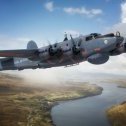


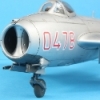
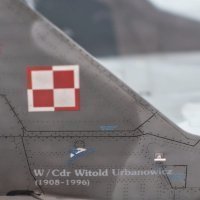
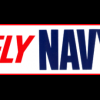
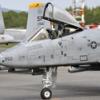
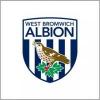

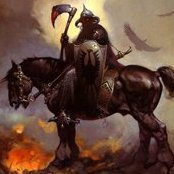

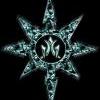
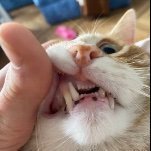
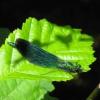


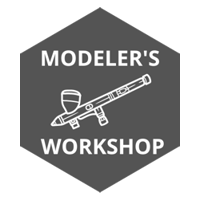
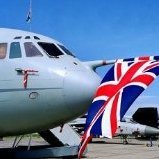
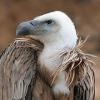
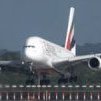

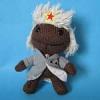
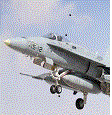

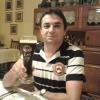
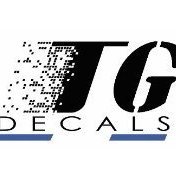
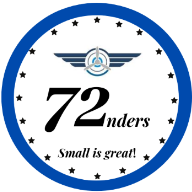
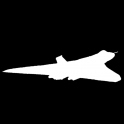

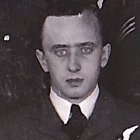


.thumb.jpg.d17ff607fc7e89ed057e63fcb6f2a888.jpg)
